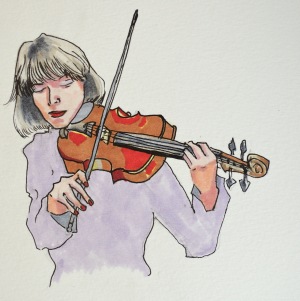Imagine the following. You have been paid an exorbitantly small fee to participate in an experiment at your local university. You are brought into the testing room, and the experimenters pull a stretchy cap of electrodes over your head. They show you a big needle full of green gel (“Now, this won’t hurt a bit!”) and start injecting the gel through the small holes in the cap, right on your hair. This goes on for quite a while. After this contraption called an electroencephalogram (EEG) is all set up, you are told to listen to a recording of words (minute, eon, moose, hammer). The electrical energy from the centre of your brain is recorded as you listen.
The EEG cap is pulled off your head and you are sent into an adjoining room to wash your hair. It takes a long while to get the gel out. Meanwhile, your friend Linda is brought into the room. The electrical energy that was recorded from your brain is played back to Linda, who never heard the original recording. Linda listens closely, hesitates, and then says, “Minute, eon, moose hammer.” She can identify the words that you were listening to, solely from the recordings of your brain.
This recording is called the frequency following response, and is produced by nuclei in the brainstem, an ancient part of the brain buried deep in the middle of your skull. The frequency following response imitates any sounds that you hear. Using different components of a sound, it can create the individual quality produced by any noise.
